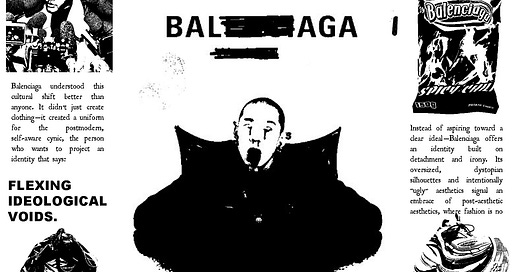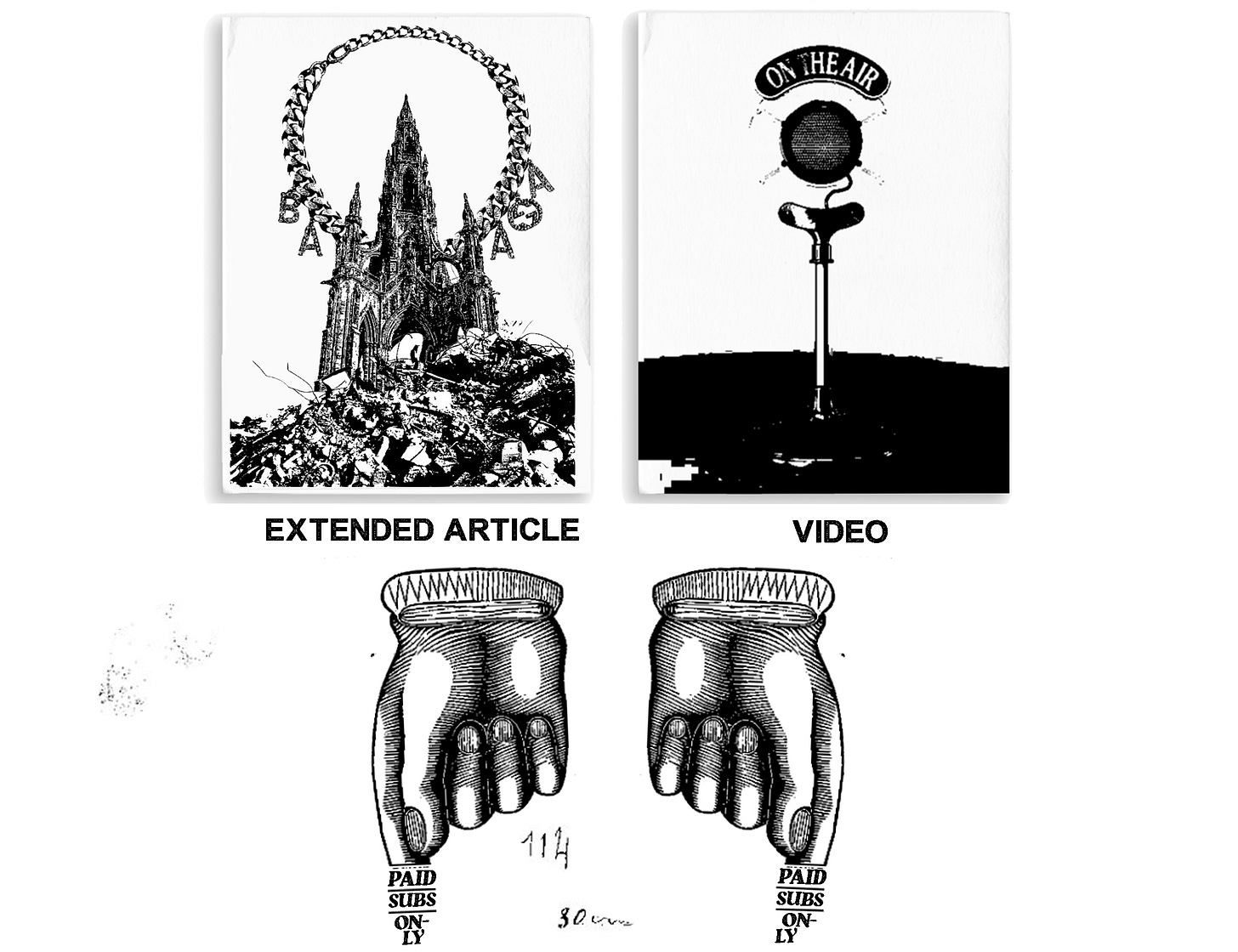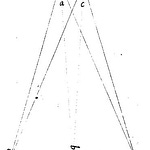Balenciaga: The Uniform for a Society That Believes in Nothing
Without a doubt, there’s an undeniable genius in what Demna has done at Balenciaga, and to reduce his work to a cynical scam would be to miss the deeper cultural significance of it. Demna is not just a designer, he is a mirror, reflecting the collective psyche of an era defined by disillusionment, identity obsession, and the commodification of selfhood.
What makes Balenciaga such a cultural force is precisely its ability to capture the spirit of an age where belief itself has become obsolete. Demna understood something profound: fashion is not just about clothing, it is about ideology, about the way we see ourselves, and, more importantly, about the way we want to be seen. He recognized that people don’t buy fashion for function; they buy it to project their internal world outward. And in an era where everything is relative, where we have dismantled objective value systems, and where meaning has been replaced by spectacle, he gave form to the only thing left, the aesthetics of detachment itself.
The Genius of Demna: Selling Relativism as a Status Symbol
Balenciaga is the perfect brand for an era where truth is subjective, beauty is a colonialist construct, and anyone who believes in objective standards of taste is a reactionary dinosaur.
Is this hoodie ugly? That’s a bourgeois question.
Is this bag worth $2,000? That’s an outdated framework.
What even is luxury anymore? Exactly.
Demna took postmodern deconstructionist theory, skinned it alive, and turned it into a product line. In doing so, he gave an entire generation of hyper-online, irony-poisoned consumers a brand that reflects their own ideological emptiness back at them.
He is not designing clothing. He is giving form to a worldview that is allergic to sincerity and thrives on detached, academic cynicism. It’s the aestheticization of the idea that nothing means anything, and if nothing means anything, then $3,000 for a sweater is just as valid as $30.
The Deconstruction of Luxury (Or, How to Sell a Trash Bag for $1,700)
Balenciaga operates on a simple but ruthless premise:
Luxury is not in the fabric, luxury is in the idea.
It’s a deliberate inversion of traditional fashion logic. The value isn’t in how well something is made, but in how well it communicates the brand’s identity. A $3,000 Balenciaga hoodie isn’t competing with a hand-tailored Dior suit, it’s competing with a meme.
And this works because modern consumers don’t aspire to quality, they aspire to ideology. They don’t want clothes, they want a uniform that signals they are in on the meta-ironic fashion joke that is late-stage capitalism.
The Commodification of Selfhood: Selling a Version of You
If identity is the product, then fashion is one of the most powerful tools for constructing and selling it. The economy has shifted from selling things to selling selves. Your value is no longer tied to what you own, but to the version of yourself you can package and present to the world.
Balenciaga thrives in this economy by offering more than clothing, it offers cultural capital. It provides wearers with an aesthetic language that is instantly recognizable in the fashion and social media hierarchy. Buying Balenciaga is not just about the clothes, it’s about the image you project:
The post-ironic fashion intellectual.
The hyper-aware, too-cool-to-care tastemaker.
The detached, aesthetically fluent participant in late-stage capitalism’s absurdity.
And the brilliance, or horror, of it is that this identity has a price tag. The ability to look like you don’t care is an expensive illusion, one that only those who can afford a $3,000 trash bag coat can truly pull off. Balenciaga has perfected the art of selling authenticity through inauthenticity, where the performance of detachment is so refined that it becomes the ultimate status symbol.
The Dark Loop: When you Become the Brand
The real danger here is that when identity becomes a commodity, it ceases to be real. When you build your persona around what you wear, what happens when that aesthetic no longer serves its cultural function? When irony stops being fashionable? When the very thing that once made you aspirational becomes passé?
Balenciaga, like all brands, operates in cycles of consumption. But what it sells is not just clothing, it sells an identity that feeds on its own cynicism. It has turned fashion into a self-referential, high-stakes game of cultural one-upmanship, where the only way to stay relevant is to continue leaning into the void.
And so we reach the core question: if selfhood is now a product, who owns it, you, or the brands that supply it to you?
Fashion as the Architect of Identity (or: How your Clothes are Playing You)
See, here’s the problem: fashion is not just a mirror, it’s an architect. It doesn’t simply reflect culture, it builds the scaffolding of how we see ourselves, how we interact with others, and ultimately, how we behave. You are not immune to this. No one is.
The Saint Laurent guy doesn’t just wear the boots, he develops a sudden, insufferable penchant for chain-smoking and talking about how he only listens to obscure post-punk. The Rick Owens devotee starts walking like they’re perpetually emerging from the shadows of an underground Berlin club at 4 AM. And the Balenciaga wearer? Well. They become a high-fashion nihilist, mistaking their $1,500 hoodie for a PhD in postmodern philosophy.
The Psychological Consequences: When Meaninglessness Becomes a Uniform
This is where things take a darker turn. Because fashion has always been a reflection of deeper psychological and societal conditions. When we wore power suits, we believed in power. When we wore rebellion, we believed in change. Now, we wear detachment. We wear absurdity. We wear nihilism, not just as a statement, but as a lifestyle.
And here’s the terrifying part: when you dress in meaninglessness, when you consume meaninglessness, when you spend thousands to align yourself with the aesthetics of detachment, it is not just an image, it becomes your reality.
Balenciaga isn’t just clothing, it’s a reinforcement of the mindset that nothing matters. And when that mindset is not just an internal worldview but a physical extension of yourself, when it is worn, purchased, displayed, and validated, it seeps deeper into your being. It becomes real.
Because we have embraced a culture that tells us nothing matters, that belief is cringe, that sincerity is embarrassing. We have not just passively accepted it, we have made it aspirational. We have worn it. We have paid for it. We have turned it into a product that generates billions.
And so, the loop perpetuates itself. The more we engage, the more we reinforce the mindset. The more we buy into it, the less able we are to see outside of it. It’s no longer just an idea, it’s a reality that we embody, in the most literal sense.
THE PSYCHOLOGY OF ASPIRATIONAL NIHILISM: WHEN NOTHINGNESS BECOMES LUXURY
At its core, what Balenciaga has done is take a universal, creeping sense of existential meaninglessness and wrap it in the prestige of a designer label. It has turned the mundane, the hopeless, and the disillusioned into something aspirational. But why does this work? Why are we so drawn to it?
1. Aestheticizing Our Own Disillusionment: The Comfort of Recognition
One of the deepest psychological desires humans have is to feel seen and understood. In an era where optimism feels naïve and sincerity feels embarrassing, the dominant emotional state is detachment, exhaustion, and irony. People feel alienated, by work, by politics, by endless digital overstimulation, by the realization that they are not really in control of their own lives.
Balenciaga taps into this shared cultural mood and reflects it back at us in a form that is visually recognizable. Oversized silhouettes that swallow the body, dystopian streetwear, intentionally “ugly” luxury, these design choices are not just fashion statements, they are emotional states made wearable. They reflect the reality we feel inside.
And when something external mirrors our internal world, we feel validated. It tells us, “Yes, you are not alone. The world is absurd. And you are right to feel this way.”
2. The Transformation of Despair into Prestige: Why Make It Luxury?
Here’s where things get psychologically darker, it’s not just that Balenciaga acknowledges disillusionment, but that it elevates it into an elite, high-status aesthetic. This transformation does something psychologically seductive: it turns powerlessness into power.
If everyone is trapped in meaninglessness, then the ones who own it, who wear it best, are the ones in control.
If hopelessness is the default state, then the ones who make it “cool” are the new elite.
Balenciaga provides a way to own your nihilism, to wield it as a flex, rather than be crushed by it. It tells you: Yes, the world is fucked. But if you wear this, you are not just another victim of the system, you are someone who understands it better than everyone else.
There is power in aesthetic mastery, even in an aesthetic built on emptiness. It turns passive despair into an active, curated identity, making people feel like they are participating in their own disillusionment, rather than being passively consumed by it.
3. The Sartorial Performance of Hopelessness: Wearing the Zeitgeist
There is also an element of social signaling at play. People don’t just buy Balenciaga because they like the designs, they buy it because of what it communicates about them.
It signals that you are culturally fluent, that you understand fashion’s current language.
It signals that you are part of a specific intellectual and artistic elite, one that sees through the facade of traditional aspiration.
It signals that you are participating in the grand joke of late-stage capitalism, where even nihilism has been commodified.
Wearing Balenciaga is not just about dressing, it’s about embodying a worldview. And in an era where meaning is scarce, wearing meaninglessness becomes an identity in itself.
4. The Price Tag as a Psychological Justification: Is the Hopelessness Genuine?
This is where things get interesting, why do people spend thousands on clothing that is designed to look like it was pulled from the rubble of a collapsed civilization?
One reason is cognitive dissonance, when people spend absurd amounts on something, they convince themselves that it must be valuable. The act of investing thousands in a torn hoodie or a pair of destroyed sneakers creates an emotional justification:
If I spent this much, it must mean something.
If I’m wearing this, I must be part of something important.
If this costs more than rent, it must be high art.
But another reason is more brutal: maybe the hopelessness is real.
Maybe people buy into this aesthetic because, deep down, they really do feel like the world is crumbling, like nothing truly matters, like everything is a spectacle designed for consumption and resale. The suffocating realization that everything, from your friendships to your personality, is now a monetizable asset in the algorithmic casino of modern life. And if that’s the case, then why not dress the part? Why not at least look good while the world burns?
5. The Dark Triumph of Balenciaga: Selling a Crisis Back to Its Victims
The final, most cynical twist in all of this is that Balenciaga has commodified the very existential crisis that its own audience is suffering from. It has taken the feeling of being trapped in a meaningless, algorithm-driven society and turned it into a luxury item. It has found a way to profit off hopelessness itself.
It’s like selling bottled air to a drowning man.
And yet… we buy it. Because it looks good. Because it feels like participation. Because, in a way, it feels like power.
Demna’s Dark Triumph: The Ultimate Fashion Statement for a Collapsing World
Is Demna a genius? Undeniably. His ability to tap into the collective subconscious and translate it into fashion is unparalleled. He is not just designing clothes, he is materializing the spirit of the age, capturing the exact essence of what people believe and desire, even when they don’t realize it themselves. That is what makes Balenciaga so powerful, so seductive, and so dangerous.
Because at its core, Balenciaga is not just selling nihilism, it is making nihilism a desirable identity. And once you make an identity aspirational, it becomes inescapable.
We don’t just wear Balenciaga. We live it.
And maybe that’s the most unsettling truth of all.
The Responsibility of the Designer: WHERE DO WE GO FROM HERE?
If a designer’s power lies in repackaging cultural truth into something aspirational, then what happens when the truth they reflect is nihilism?
Do they have an obligation to not just glorify the abyss, but illuminate a way out of it?
Or is that expectation naïve in a world where hopelessness is the only thing that feels real?
The Double-Edged Sword of Making Nihilism Cool
Let’s be clear, Demna’s genius isn’t in creating nihilism, it's making it desirable. He didn’t invent the sense of exhaustion, irony, and post-meaning detachment that defines our era, he just packaged it into something wearable, something aspirational, something worth $3,000.
And that alone is a form of hope, isn’t it?
Because to take darkness and make it covetable is, in a twisted way, an act of transformation. If meaning is gone, then at least we can look good in the void. If we can’t believe in the future, we can at least wear our disillusionment with style.
That’s something, isn’t it?
Or maybe it’s a trap.
Maybe by making nihilism aspirational, Balenciaga isn’t just reflecting cultural despair, it’s cementing it.
Because once something becomes a status symbol, it’s no longer just an aesthetic. It’s a belief system.
And when detachment becomes the dominant fashion ideology, what happens to the people wearing it?
Should a Designer Provide a Way Forward?
Here’s where it gets interesting. If Balenciaga’s success proves that people are desperate for meaning, even in the form of stylish meaninglessness, then doesn’t that suggest a deeper hunger for something beyond detachment?
Maybe, if you are powerful enough to shape culture, you have a responsibility to add another dimension to it.
Not just to mirror the dark, but to embed a way forward within it.
This doesn’t mean abandoning nihilism, it means containing both shadow and light in a way that transforms despair into something beyond irony.
Right now, Balenciaga stops at the abyss. It makes the collapse of meaning fashionable, but it doesn’t suggest what might come after.
But what if it did?
What if Balenciaga didn’t just sell detachment, but also offered a form of transcendence within it? What if nihilism wasn’t the destination, but the launching point for something greater?
The Missing Dimension: A Flicker of Light in the Void
People are drawn to Balenciaga because it makes the dark feel powerful, controlled, aesthetic. But what if it also offered a glimpse of something beyond that?
It doesn’t need to be overt. Hope doesn’t have to be saccharine or naïve. But it has to exist.
Right now, Balenciaga gives people a uniform for cultural exhaustion. But the next evolution of fashion, the one that will matter most, will be the one that gives people something to believe in again.
Because making the void fashionable is clever.
But designing a way out of it?
That would be revolutionary.
And maybe, Demna now has the opportunity to do exactly that.
With his transition to Gucci, he steps into a house with a different legacy, one not rooted in postmodern collapse, but in excess, sensuality, and decadent beauty. It’s a fresh slate, an entirely new world to build.
At Balenciaga, he distilled cultural nihilism into something aspirational.
At Gucci, could he take it a step further? Could he infuse his aesthetic language with something beyond detachment, something that offers a sliver of belief, a sense of momentum, a way forward?
Maybe this is his final, most radical act, not just making despair desirable, but proving that, even in an era drowning in irony, hope can still be seductive.















Share this post